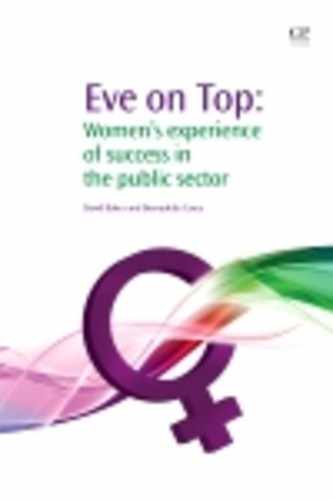Preface
UK public sector organisations by and large do not yet have a good record when it comes to women in senior positions – and in particular in the chief executive role. Typically, women earn less and go for any job rather than be unemployed, whereas men are more likely to spend periods unemployed while waiting for that more ambitious ‘dream job’. Inequality begins even before the effect of childbirth. This translates through to a much greater imbalance at the top end of many sectors. In most public sector institutions in the UK, the position of female employees is still relatively weak in comparison to that of men in terms of senior positions. While attempts are being made to change the situation, much remains to be done in order to bring the numbers of women in such roles to a more representative level, not least because of embedded cultural and attitudinal issues.
However, cultural heterogeneity can strengthen an organisation rather than weaken it. It is argued that a diverse workforce will provide a better, more successful model for an organisation as it needs to succeed in an increasingly diverse society and, it is also argued, be more flexible and able to cope with change by virtue of its diversity, with the broadest range of skills, experiences and attitudes available to the organisation as it faces future challenges. In recent years, there have been positive moves to embrace and increase diversity in terms of the gender and social and ethnic backgrounds of the workforce – diversity as the right, normal, accepted, embedded situation in the workplace.
In preparing to write this book, we were surprised at the limited amount of published material on the subject that took a qualitative rather than a quantitative approach. We therefore decided to take an in-depth look at the position of women in senior positions. A modified case study approach has been adopted. Some 16 ‘successful’ women were identified and interviewed in detail about their background, upbringing, career progression, successes and failures, challenges and experiences. While the majority of the participants in our study are from the public sector, a number are from the private sector and most had experience of different types of organisation. Each woman was asked to summarise their interview with a ‘lessons learned’ response in the form of advice both to other women and the organisations in which they work. The participants are anonymous. The richness of the data from the research was almost overwhelming, and we have had to omit a significant amount of material from the published work. In doing this, we hope that we have covered all the major themes and issues that our 16 participants raised and discussed during the course of the interviews with them.
The structure of the book is as follows. The first chapter looks at the broader context of women in senior roles through a review of recent relevant key literature, while Chapter 2 describes and reflects on the methodology used in our research. We then focus in the next two chapters on the 16 women who participated in our study, the factors and characteristics that shaped them and how they defined and viewed their – and others’ – success. Chapter 5 then looks in general at how the women had reached their present positions and the extent to which they had planned their careers, followed by a more detailed review in Chapter 6 of mentoring, role models and networking. We follow this in Chapter 7 by concentrating on questions of gender, as experienced particularly by the participants in our study, and with special reference to the extent to which being a woman hinders – or helps – career progression. Chapter 8 then analyses the specific barriers and obstacles that our research revealed, while Chapter 9 is devoted to ‘the glass ceiling’ as experienced – or not – by the 16 women and more broadly. Chapters 10, 11 and 12 look at the sacrifices and gains, balances and choices experienced by the women, the extent to which domestic considerations had to be taken into account in their professional lives and careers and the degree to which they had to work harder – or were perceived as needing to work harder – than their male counterparts. Chapter 13 then focuses on leadership and management styles as evinced by the women and also as experienced by them, while Chapters 14 and 15 sum up the advice that they would give to men and then women in senior roles. We aim to summarise our work in Chapter 16.
